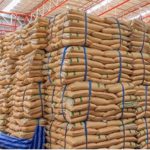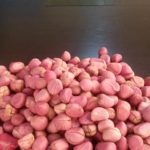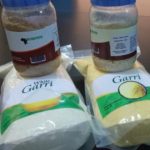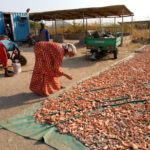Soya Beans
Soya Beans
Introduction to Soya Beans
Soya beans are a type of legume that belong to the pea family. They are native to East Asia and have been cultivated for thousands of years for their nutritional value and versatility. Soya beans are rich in protein and other essential nutrients, making them an important food source for vegetarians and vegans. In this article, we will explore the various aspects of soya beans, including their nutritional benefits, types and varieties, cultivation and harvesting techniques, processing and production methods, culinary applications, health considerations, environmental impact, and their role in modern agriculture.
Nutritional Benefits of Soya Beans
Soya beans are packed with several key nutrients that make them a valuable addition to a balanced diet. They are an excellent source of plant-based protein, containing all the essential amino acids necessary for the body’s growth and repair processes. Additionally, soya beans are rich in fiber, which aids digestion and helps maintain a healthy digestive system. They also contain healthy fats, vitamins, and minerals such as iron, calcium, and magnesium. Consuming soya beans regularly can contribute to improved heart health, lower cholesterol levels, and reduced risk of certain chronic diseases.
Types and Varieties of Soya Beans
There are several different types and varieties of soya beans available, each with its own unique characteristics and uses. The most common types include black soya beans, yellow soya beans, green soya beans, and roasted soya beans. Black soya beans are known for their strong flavor and are often used in Asian cuisines, while yellow soya beans are milder and more versatile. Green soya beans, commonly referred to as edamame, are harvested at an early stage and are commonly boiled or steamed and used as a snack or added to salads. Roasted soya beans are a popular crunchy snack and can be seasoned with various spices for added taste.
Cultivation and Harvesting of Soya Beans
Soya beans require specific growing conditions to thrive. They are typically planted in well-drained soil with a balanced pH level. The cultivation process starts by sowing seeds directly into the ground or transplanting seedlings. Soya beans are relatively low-maintenance plants, requiring regular watering and protection from pests and diseases. Harvesting usually takes place when the pods are fully matured and have turned brown or yellow. The plants are carefully uprooted, and the beans are removed from the pods using appropriate tools. Proper harvesting techniques and timing ensure maximum yield and quality.
Processing and Production of Soya Beans
After harvesting, soya beans undergo various processing and production methods to make them suitable for consumption. The first step is cleaning the beans to remove any impurities such as dirt and debris. They are then dried and dehulled to remove the outer hard covering. The dehulled beans can be further processed into different forms, including soya flour, soya milk, soya protein isolate, soya oil, and soya meal. These products are used in a wide range of food products, including tofu, soy sauce, meat substitutes, dairy alternatives, and baked goods.
Soya Beans in Culinary Applications
Soya beans are incredibly versatile and can be used in a variety of culinary applications. They are a staple ingredient in many Asian cuisines, including stir-fries, soups, and noodle dishes. Tofu, which is made from coagulated soya milk, is a popular plant-based protein substitute that can be cooked in various ways. Soya beans can also be used to make soya milk, which serves as a dairy alternative for those who are lactose intolerant or prefer a plant-based lifestyle. Moreover, soya flour can be incorporated into baking recipes, adding protein and enhancing the nutritional value of baked goods.
Health Considerations and Soya Beans
Soya beans are generally considered safe for consumption, but individuals with specific health conditions should exercise caution. Some people may have soy allergies or intolerance, experiencing symptoms like digestive discomfort, skin rashes, or breathing difficulties. Additionally, it is important to note that soya beans contain compounds called isoflavones, which have estrogenic effects. While these compounds can provide various health benefits, excessive intake may interfere with hormone balance, especially in individuals with certain hormonal disorders. It is recommended to consult a healthcare professional before significantly increasing soya bean consumption.
Environmental Impact of Soya Bean Production
The production of soya beans can have both positive and negative environmental impacts. On the positive side, soya beans are nitrogen-fixing plants, meaning they can enrich the soil with nitrogen and reduce the need for synthetic fertilizers. However, large-scale cultivation of soya beans has been associated with deforestation, particularly in regions like the Amazon rainforest. Clearing land for soy plantations can lead to habitat loss, soil erosion, and the release of greenhouse gases, contributing to climate change. To mitigate these environmental concerns, sustainable farming practices, such as agroforestry and crop rotation, should be adopted.
Soya Beans in Modern Agriculture
Soya beans play a significant role in modern agriculture, both as a cash crop and as part of sustainable farming systems. Their high protein content and versatility make them an economically valuable commodity in international markets. In addition, soya bean crops are often included in crop rotation systems to improve soil fertility and break pest cycles. The crop’s ability to fix nitrogen also reduces the need for chemical fertilizers, making it an environmentally friendly option. Moreover, genetic modifications have been introduced to enhance crop yield, disease resistance, and nutritional composition, thereby increasing the efficiency and profitability of soya bean production.
Conclusion: Incorporating Soya Beans into Your Diet
Adding soya beans to your diet can be a beneficial way to increase your intake of plant-based protein and other essential nutrients. Whether you choose to consume them in the form of tofu, soya milk, or whole beans, soya beans offer a wide range of culinary possibilities. However, it is important to consider individual health needs and any potential allergies or intolerances before incorporating soya beans into your daily meals. By understanding the various aspects of soya beans, from cultivation to environmental impact, you can make informed choices and enjoy the nutritional benefits that this versatile legume has to offer.
SHIPPING DOCUMENTS
Bill of Lading
Certificate of Origin
SGS Inspection Certificate
Phytosanitary Certificate
Fumigation Certificate
Commercial Invoice
Packing List
To Contact:
: +234(80)66579079
[email protected]
cc: [email protected]
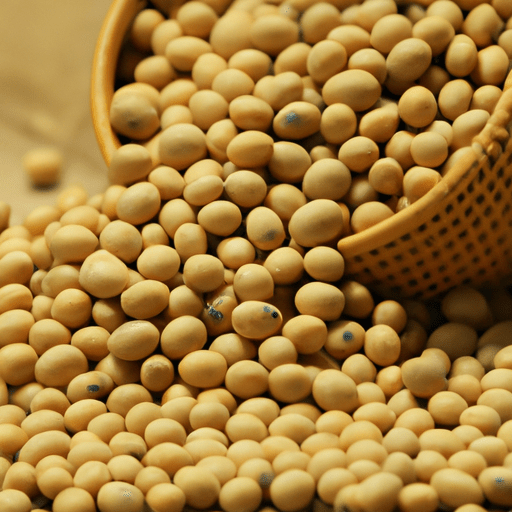

TRADE PROCESS
Cost Insurance and Freight (CIF):The seller handles everything from loading the vessel, paying for insurance, and shipping the product to the country the buyer wants it delivered.
Freight On Board (FOB):The seller is responsible for handling the transportation of the goods to the port of shipment and loading cost. Once the goods are loaded on the ship, all liabilities transferred to the buyer. Liabilities like unloading, insurance, marine freight transport and transporting products to its destination.
We Are Ready To Handle Your Request
Enter your details and we will get in touch to discuss your project


